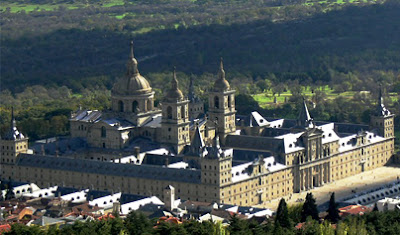Spanish
renaissance is the expression of the artistic and scientist movement originated in Italy in the 14th century, and later extended to the rest of Occidental Europe. The Renaissance in Spain
takes time to penetrate from Italy, especially by force to the Gothic
Elizabethan plays in our land. Throughout the century of Renaissance
architecture in Spain, there are several stylistic trends,
especially Plateresque and, above all, in the final stretch of the
Renaissance: the serious and austere Herreriano style.
First period: Plateresque
On this period of the renaissance architecture in Spain, an architecture with very marked characteristics was forged. This architecture had influences of the local Spanish Muslim living under the Christian rule, of the flamboyant Gothic of the north and of the Italian architecture also. This eclectic Spanish style has received the name of "plateresco" for of the extremely decorated fronts of its buildings, which were compared to the dense and retailer work of the silversmiths.
Second period: Classic or Purist style
This style appears during the second third of the sixteenth century. This style introduces the classical structures of the Italian Renaissance in roofs, floors, etc. Purism is characterized by greater decorative austerity, which is limited to specific elements, usually classically inspired. There are many buildings which look more serene, harmonious and balanced. Some of the examples of this period are the fllowing:
-The Alcazar of Toledo: it is a fortification on rocks, located in the highest part of the city of Toledo. This building dominates the city. Its author is Alonso de Covarrubias. It is a strong geometric building, with a square around a central courtyard also square with corner towers.
-Puerta nueva de la bisagra de Toledo: It is also a Covarrubias’s piece. It is the
gateway to the city of Toledo in the wall. The entrance is flanked by two
buckets. The decor is based shields, gables, etc..
-University
of Alcalá de Henares Facade: Its author was Rodrigo Gil de Hontañón. The facade
has three bodies. There are large number of decorative elements, especially in
the center where they set shields, crest pediment and balustrade. The facade
has arches and Corinthian columns attached. There are also semi-circular
pediments in vain.
-Tavera's hospital: (also known as Hospital of San Juan Bautista or Hospital of outskirts) It's an important building of Renaissance style located in Toledo. The hospital was built between 1541 and 1603 on order of the cardinal Taver. The distance with the old hull of th ecity gave him the name of ''the hospital of the outskirts'', since, inside the walls, the hospital of Santa Cruz already existed.
Third period: Herreriano style
Herreriano
style is a mannerist style developed in the last third of the sixteenth
century. This style was named as 'herreriano style' in Juan Herrera's honor,
and it dominated the Spanish architecture for almost one century. It is characterized by the predominance of the
constructive elements, the decorative absence, the straight lines and the cubic
volumes. It means in addition the introduction of the postulates manieristas
from Italy.
The Herreriano style masterpiece is the Monastery of El Escorial. It was commissioned by Philip II to commemorate the victory of St. Quentin against the French troops. El Escorial was built with different functions: monastery, palace, mausoleum of the royal family and a cultural and artistic center (for example, due to its great library). In the exterior, the most prominent thing is the auction of the towers in a pyramid form, with garrets and balls. The windows are rectangular without decoration and the cover has a two waters style and was built on slate.








- Follow Us on Twitter!
- "Join Us on Facebook!
- RSS
Contact